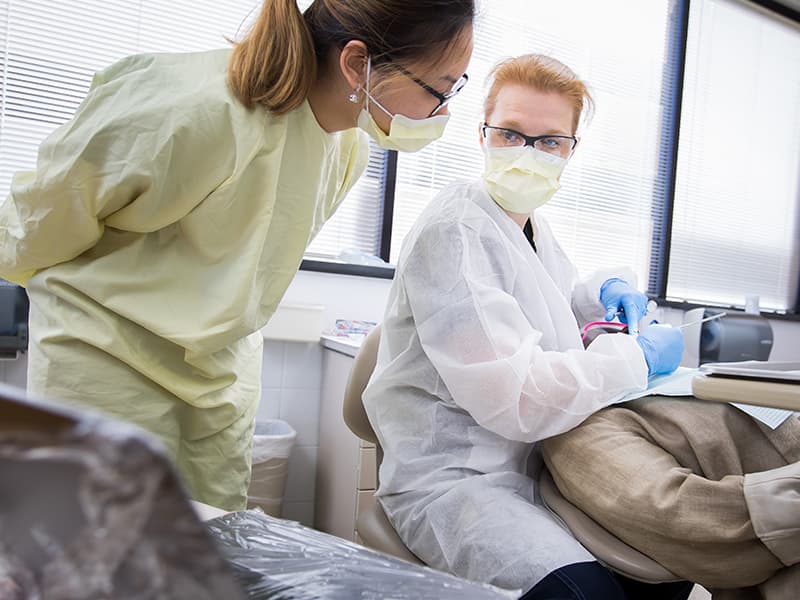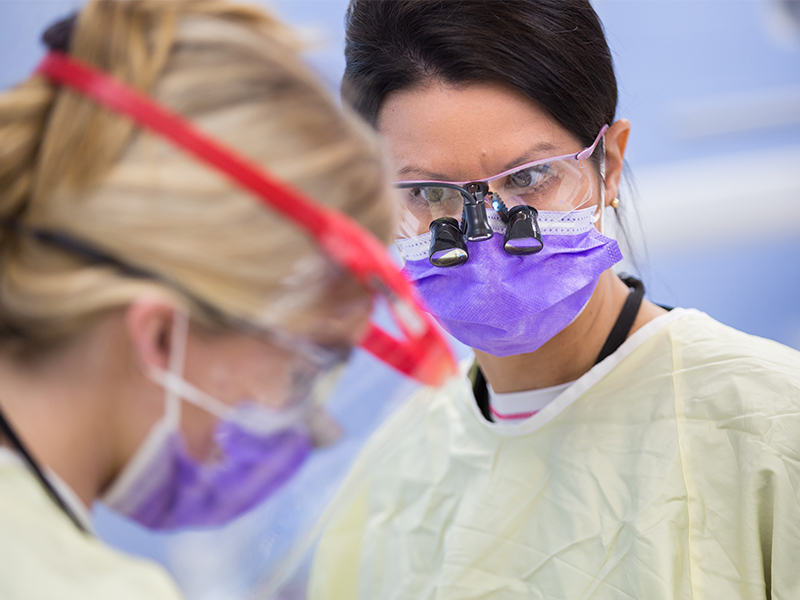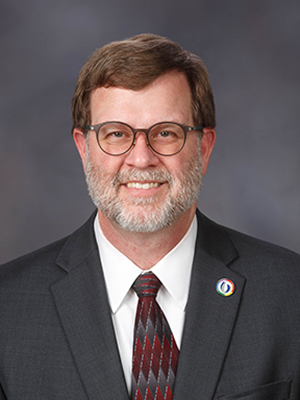Grant seeks to shore up dental faculty numbers

There are currently three faculty positions open in the University of Mississippi School of Dentistry. Another 10 faculty are approaching retirement.
Filling faculty positions has become increasingly difficult – and not just in Mississippi. The situation mirrors trends in schools across the United States.
A $995,760 grant awarded to the School of Dentistry by the Health Resources and Services Administration could provide assistance with filling the empty positions and retaining the early career faculty currently on staff.
Why is it difficult to fill empty faculty positions at U.S. dental schools? It costs thousands of dollars to attend professional school and obtain postgraduate education, but faculty positions pay as little as a third of what dental professionals might earn in private practice.
According to the American Dental Education Association, nationally, the class of 2016 dental students averaged about $260,000 in loan debt at graduation. The average dental faculty salary is $86,000.
After completing dental school at UMMC and a Ph.D. and residency at the University of Alabama at Birmingham, Dr. Jennifer Bain, associate professor and chair of periodontics and preventive sciences, started her first faculty appointment in 2014 with $275,000 in student loan debt. She estimates it will take another 20-25 years to pay off her loans at the current rate of just under $2,000 per month.
“I love teaching. I love being here and doing what I do, but it does come at the cost of lower pay,” she said.
She said she knows former classmates in private practice who started out with more debt than she but are now within five years of paying off their loans.
“I am not even making a dent in the principal,” Bain said. “I'm still paying interest. I feel like I’m drowning in debt.”
It's easy to see why some professionals leave academia to pursue careers in private practice or consider waiting to teach until after retirement from private practice. Bain said she receives offers of private practice positions frequently.
“I’m told, ‘I have an operatory waiting on you. I have patients ready tomorrow,’” she said. Taking one of those offers would mean working only four days a week and earning two to three times as much salary as she now makes teaching.
Cynthia Senior, an instructor in dental hygiene, knew she wanted to teach while she was still in the dental hygiene program at UMMC. Her instructors, many of whom are now colleagues, inspired her to continue her education with a master’s degree in secondary education.
She reached her goal through student loans and is still working to pay off the debt.
“Pursuing education is vital to us all,” Senior said. “We want to gain in our educational experiences and backgrounds, but the cost of doing that can sometimes hinder people from continuing their education. This grant does allow for that.”

The grant is designed not only to retain current faculty who have a high burden of student loan debt, but to attract new full-time faculty who can build a career in academia, particularly in pediatric dentistry, an area of need in Mississippi. HRSA classifies 18 of Mississippi’s 82 counties as highest priority dental health professional shortage areas.
Along with applications from Bain and Senior, the school has identified two potential candidates for recruitment: one in pediatric dentistry and one in advanced education in general dentistry.
Requirements for qualification for the grant are outlined by HRSA. After one year of exemplary employment, 10 percent of the faculty member’s outstanding loan debt will be paid. The payment increases with each year of service: 15 percent more at Year Two, 20 percent at Year Three, 25 percent at Year Four and 30 percent at Year Five. A total of 100 percent of student loans will be repaid for faculty members who participate in all five years.
Grant funds received each year will be subject to personal income tax.

Dr. Jason Griggs, professor and chair of biomedical materials science and associate dean for research, serves as project director. He said the grant was designed to pay off the loans of four to six participants, but the actual number will depend on the level of debt for each candidate and in what year of the project new faculty are recruited.
“The grant is intended to increase the likelihood that someone who wants to pursue a career in academic dentistry will go into academic dentistry immediately after graduation,” Griggs said. “Some students may want to become dental professors or researchers, but the need to pay off that debt would cause them to go into private practice.”
The school will report data to HRSA that show how retaining and recruiting high-quality dental faculty increases student outcomes, such as program completion rates and dental board scores - just one more step toward A Healthier Mississippi.

